The Black-browed Albatross of Grey-headed Albatross Ridge loafing on an empty nest, January 2014; photograph by Kim Stevens
Sub-Antarctic Marion Island in the southern Indian Oceans supports significant breeding populations of four albatross species – the Wandering Diomedea exulans, Grey-headed Thalassarche chrysostoma, Light-mantled Phoebetria palpebrata and Sooty Albatross P. fusca. In addition to these, two other species of albatrosses have been seen ashore on the island – Black-Browed T. melanophris and Indian Yellow-nosed T. carteri. The latter species has occasionally been seen ashore over the years, as either adults or fledglings, all thought to have come from the nearby breeding colony on Prince Edward Island (click here). The former, in contrast, is represented by only two individuals, one of a bird that bred several times, as summarized below.
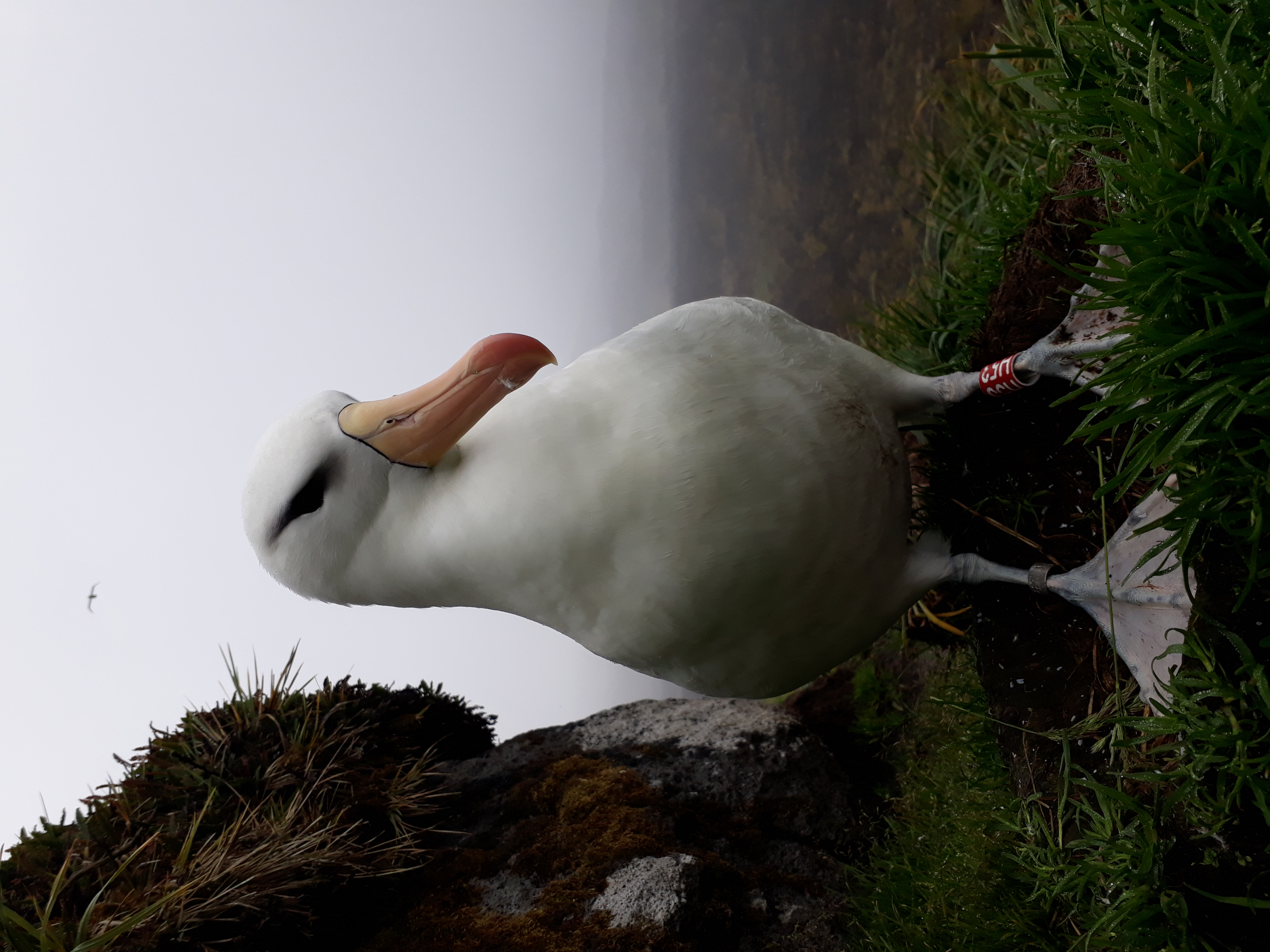
The first Black-browed Albatross gets a colour band red H53 in 2006, photograph by Michelle Thompson
The first Black-browed Albatross recorded ashore on Marion was seen on Grey-headed Albatross Ridge in 2000; it was metal banded as 9A-16339 on 2 December that year. A plastic colour band (red H53) was added in 2006. Identified genetically as a female, it attempted breeding at least four times between 2000 and 2009 with a Grey-headed Albatross. The social partner seen at the nest was also colour banded, as red H54, in 2006. The pair successfully fledged a chick in the 2006/07 season which was metal banded before it fledged, allowing it to be identified when it returned to the colony nine and 11 years later in 2016 and 2018. The other three breeding attempts failed at the egg stage. The Black-browed Albatross’ partner red H54 was last seen in 2008.
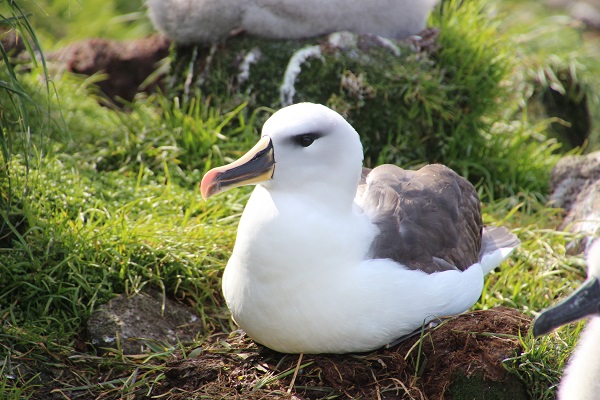
The 2006/07 hybrid chick returns to occupy a nest site, photograph taken on 1 February 2018 by Christopher Jones
Genetic testing of the chick revealed it to be the hybrid offspring of the Black-browed Albatross and a different Grey-headed Albatross – not its social partner red H54. Intriguingly, a different but similar-looking hybrid was seen near the mixed pair’s breeding site in 2017, raising the possibility that the Black-browed Albatross had bred successfully with a Grey-headed Albatross more than once.
The Black-browed Albatross was seen loafing near its nest site in most breeding seasons on Grey-headed Albatross Ridge from 2009 until 2020, with no further breeding attempts having been recorded since that of 2008/09. To date, repeated searches for the bird during the current (2022/23) breeding season have met with no success.
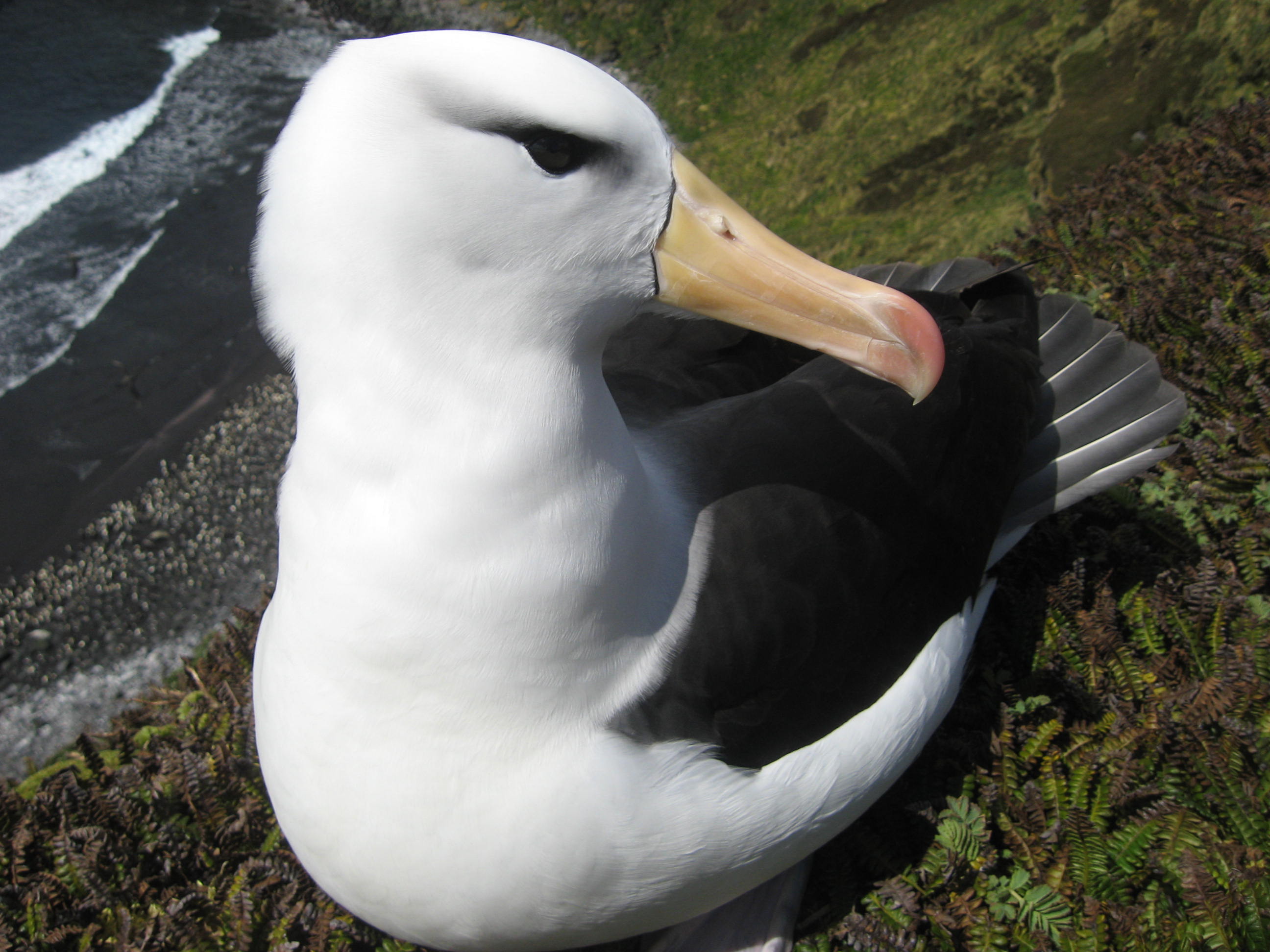
The second Black-browed Albatross on Marion Island. Above Ship’s Cove on 29 October 2008, photograph by Linda Clokie
A second adult Black-browed Albatross was photographed on the cliff top above Ship’s Cove on Marion’s north-east coast on 29 October 2008. The bird appeared to be associating with several Sooty Albatrosses. This record has not been previously published. The closest regular breeding site of the Black-browed Albatross is on the Crozet Islands, some 950 km to the east, where the species breeds in mixed colonies with Grey-headed Albatrosses.

The Ship’s Cove Black-browed Albatross was seen close to several Sooty Albatrosses resting on the cliff top, photograph by Linda Clokie
All avian research on Marion Island is conducted by experienced ornithologists under a research permit issued in terms of the island’s management plan and with ethics approval.
With thanks to Linda Clokie, Maëlle Connan, Bruce Dyer, Chris Jones, Danielle Keys, Lucy Smyth, Michelle Thompson and Eleanor Weideman for their photographs and information.
Selected Publications:
Jones, M.G.W., Techow, N.M.S., Risi, M.M., Jones, C.W., Hagens, Q.A., Taylor, F. & Ryan, P.G. 2019. Hybridization and cuckoldry between black-browed and grey-headed albatrosses. Antarctic Science 32-10-14.
Phillips, R.A., Cooper, J. & Burg, T.M. 2018. Breeding‐site vagrancy and hybridization in albatross. Ibis 160: 907-913.
Ryan, P.G., Jones, M.G.W., Dyer, B.M., Upfold, L. & Crawford, R.J.M. 2009. Recent population estimates and trends in numbers of albatrosses and giant petrels breeding at the sub-Antarctic Prince Edward Islands. African Journal of Marine Science 31: 409-417.
Weimerskirch, H., Jouventin, P. & Stahl, J.C. 1986. Comparative ecology of the six albatross species breeding in the Crozet Islands. Ibis 128: 195-213.
John Cooper, Emeritus Information Officer, Agreement on the Conservation of Albatrosses and Petrels & Kim Stevens, FitzPatrick Institute of African Ornithology, University of Cape Town, South Africa, 12 January 2023

 English
English  Français
Français  Español
Español 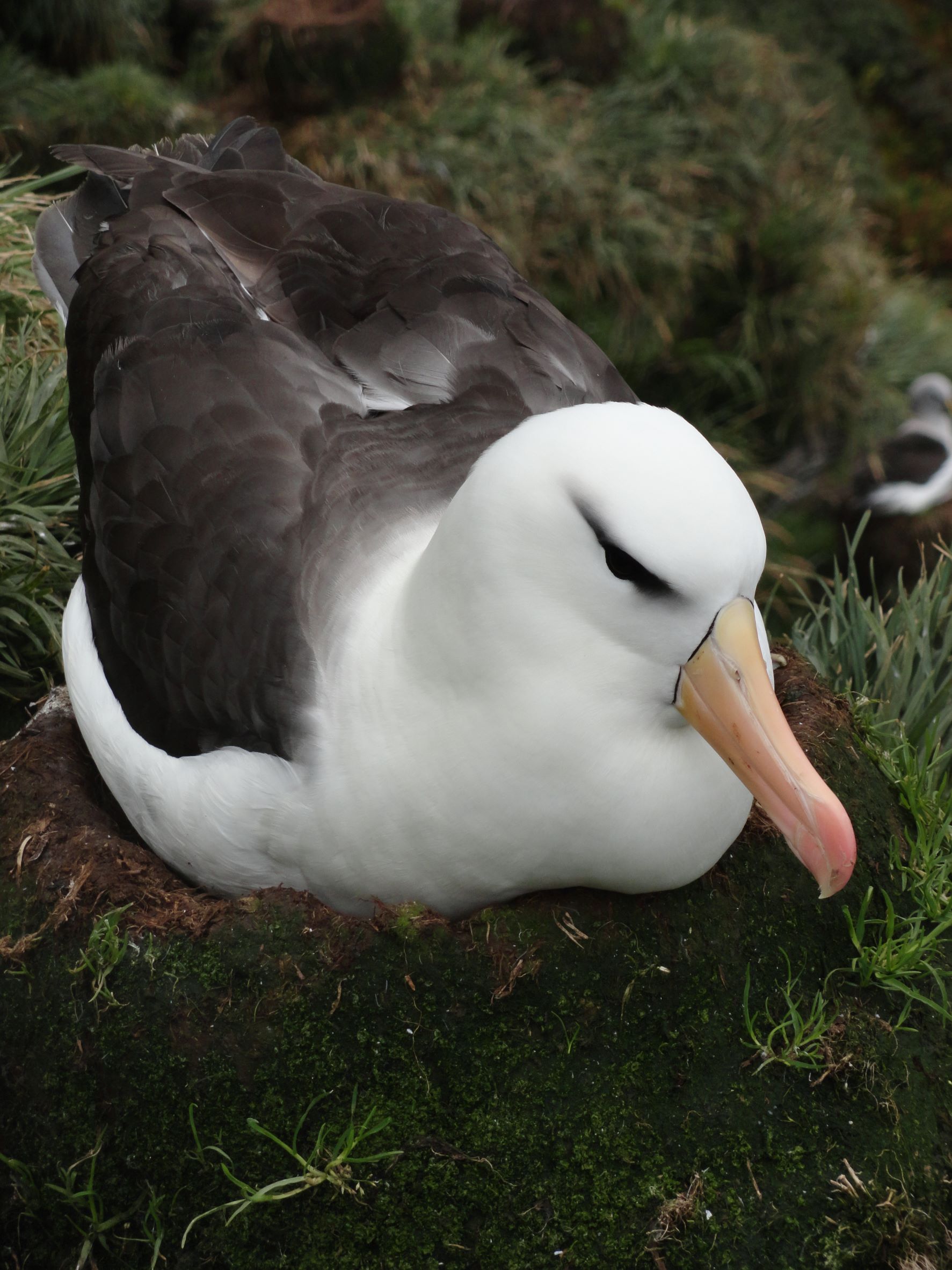
 A Wandering Albatross incubating an egg on the nest; photograph by Alexis Wandering
A Wandering Albatross incubating an egg on the nest; photograph by Alexis Wandering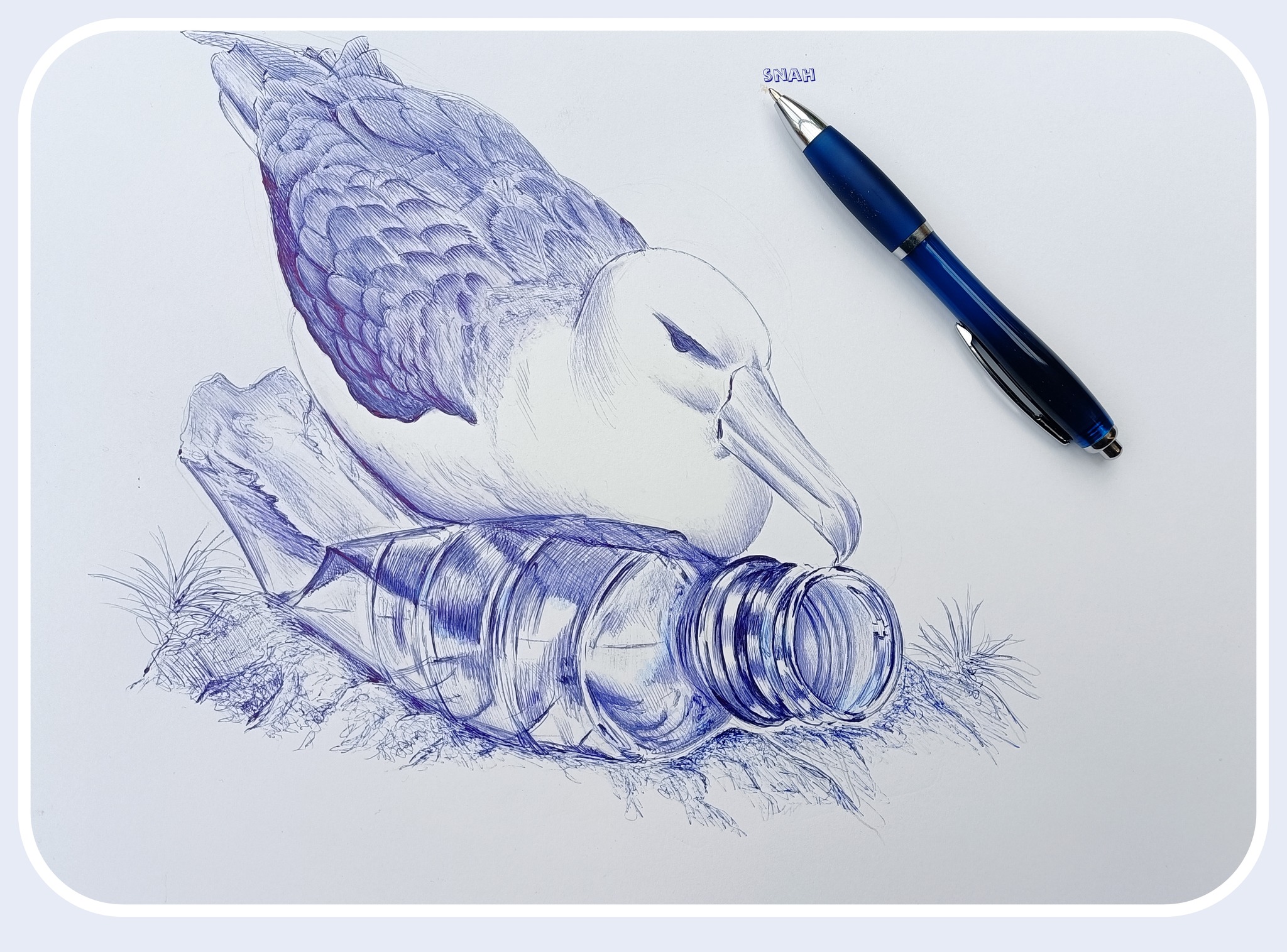
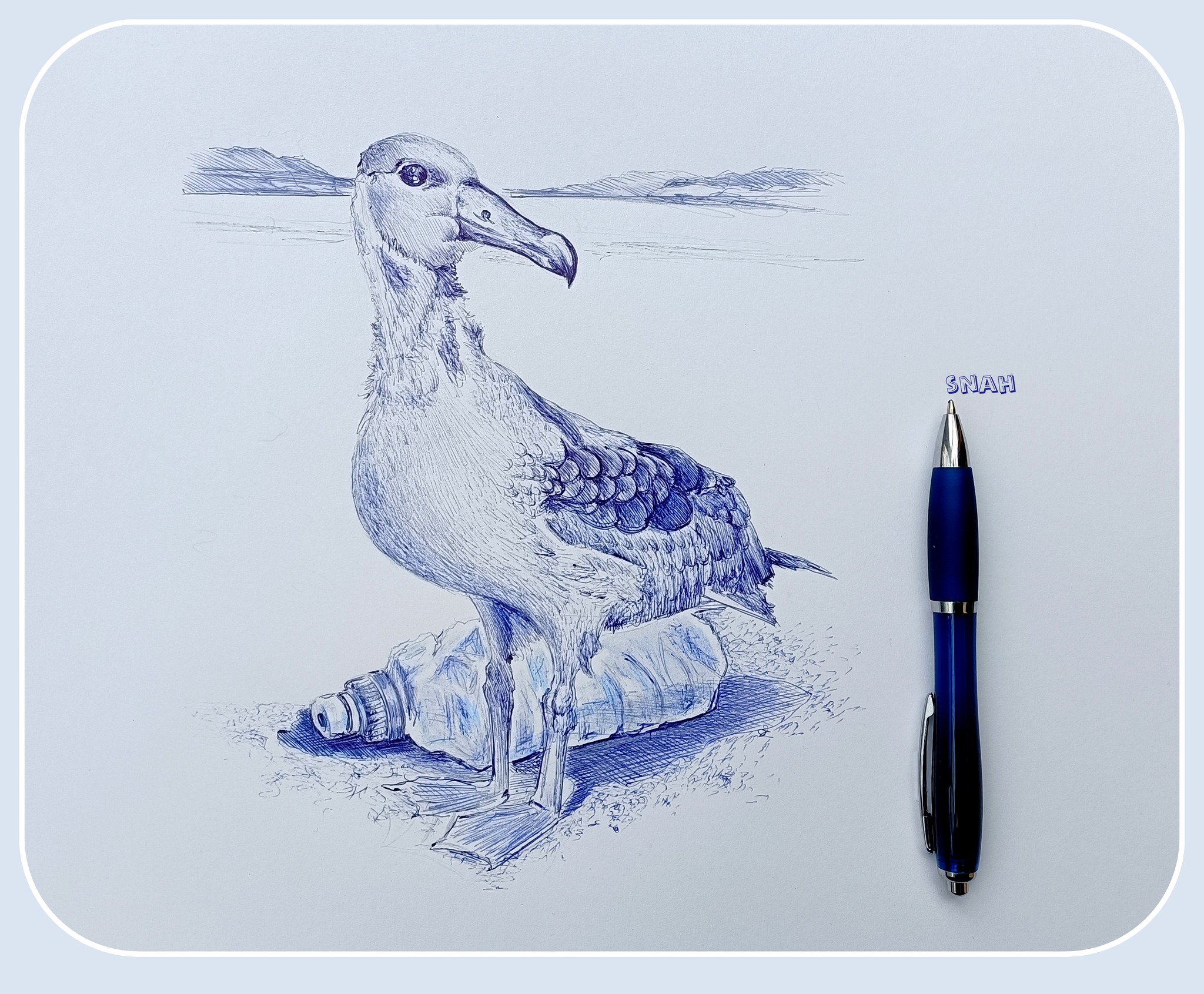
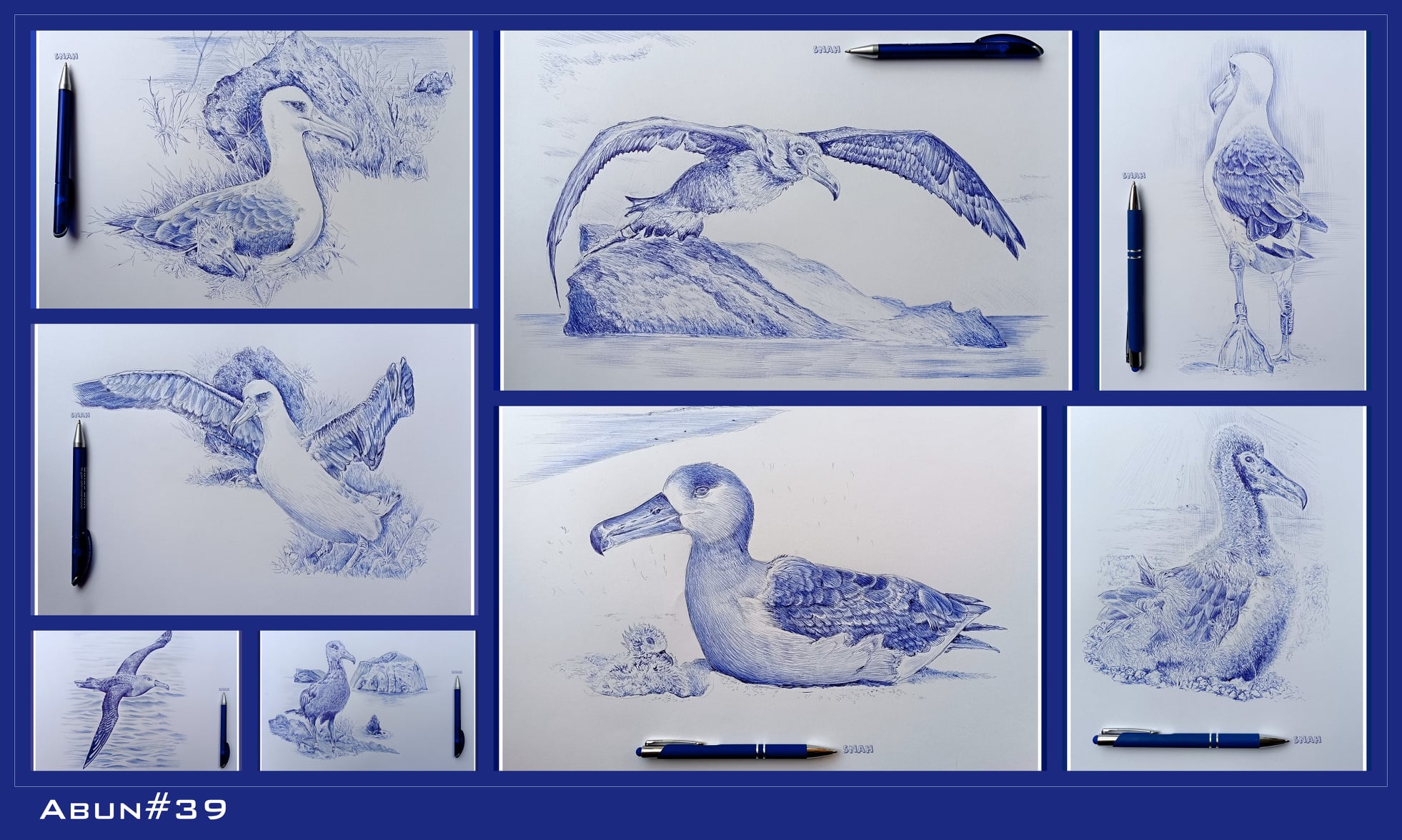
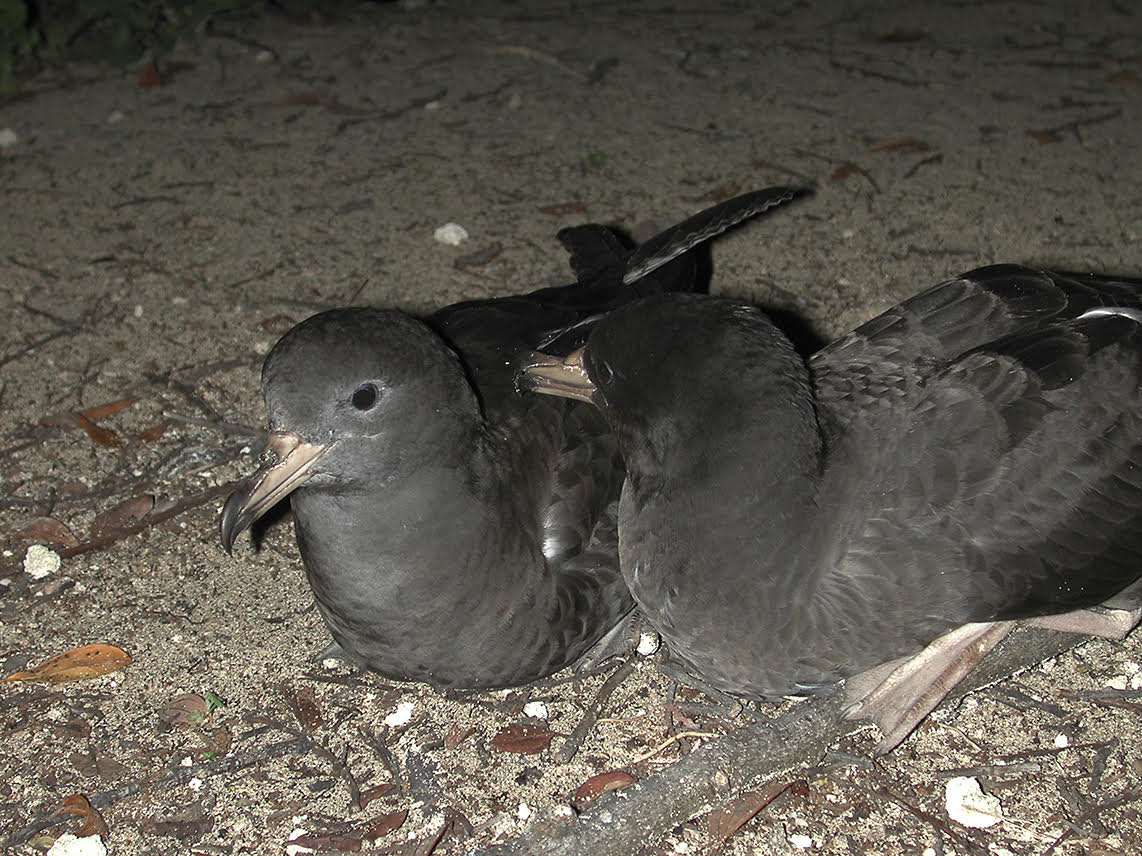 Flesh-footed Shearwaters; photograph by Ian Hutton
Flesh-footed Shearwaters; photograph by Ian Hutton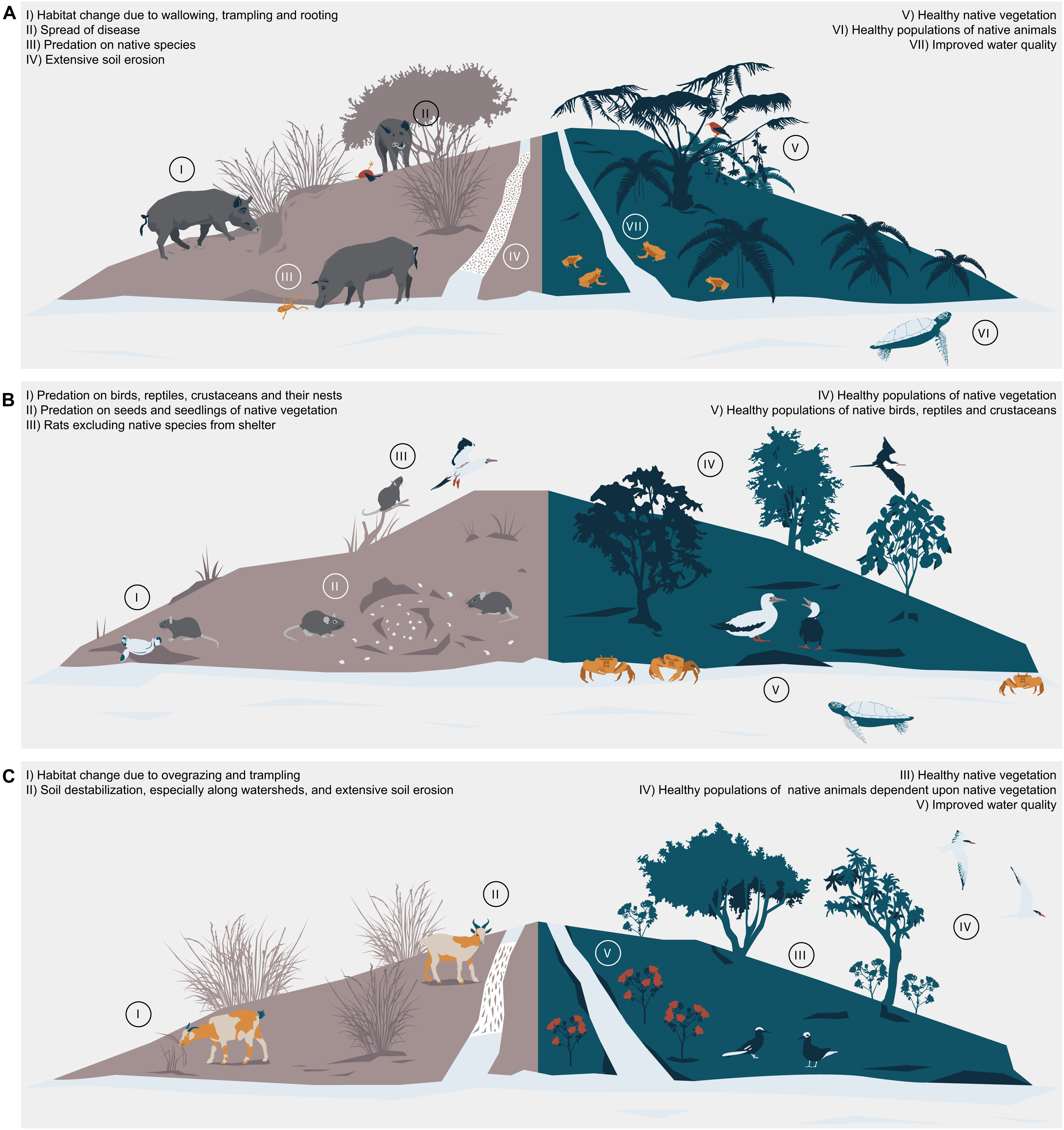 Figure 2. Diversity of terrestrial ecosystem changes that have been documented to follow island introduction of invasive mammals. The ecosystem changes are linked to the ecology of the invasive mammal, and some of the stereotyped shifts are captured. (A) Pigs are a common invader across islands, often introduced deliberately by humans for food. (B) Rats and other rodents are often introduced accidentally, traveling aboard ships and colonizing islands worldwide. (C) Goats can be introduced to islands for their perceived value as livestock, but without management can lead to dramatic shifts to island ecosystems. Note that the effects of invasive mammals will vary based upon the natural history of the island and the exact species of invader.
Figure 2. Diversity of terrestrial ecosystem changes that have been documented to follow island introduction of invasive mammals. The ecosystem changes are linked to the ecology of the invasive mammal, and some of the stereotyped shifts are captured. (A) Pigs are a common invader across islands, often introduced deliberately by humans for food. (B) Rats and other rodents are often introduced accidentally, traveling aboard ships and colonizing islands worldwide. (C) Goats can be introduced to islands for their perceived value as livestock, but without management can lead to dramatic shifts to island ecosystems. Note that the effects of invasive mammals will vary based upon the natural history of the island and the exact species of invader.